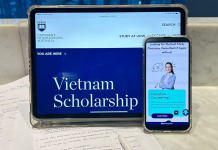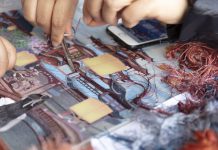According to the Hong Kong Blind Union, there are 122,600 people with visual impairment, accounting for 18 per cent of the total population. In light of the shortage of guide dogs in Hong Kong, the Hong Kong Guide Dog Association this year launched a five-year scheme to train more of them. Brian Francis is responsible for the training at HKGDA.
“Around the world, the tools that blind people can use for mobility are widespread and one of the tools is a guide dog. For the last 35 years or more, the visually impaired people in Hong Kong didn’t have a choice,” says Francis who left his job at a guide dogs school in the United States to help provide an alternative for blind people in Hong Kong.
Francis says the first difficulty to tackle in Hong Kong is the dense population but even that is not insurmountable. “I think of cities like London, New York, Tokyo where guide dogs have been for many years, and so we know that guide dogs can work in a very urban area like Hong Kong,” he says.
Francis’ plan for the programme in Hong Kong comes in two stages. First, HKGDA has been recruiting volunteers to raise puppies. Next, they are going to import more puppies from overseas. The aim is to train up 30 guide dogs in five years.
Although guide dogs are proven to be able to work in other densely populated cities, Hong Kong’s environment is sufficiently different to require the puppies to undergo special training to adapt. Raymond Cheung Wai-man is the first guide dog mobility instructor in Hong Kong, as well as the chairman of the Hong Kong Seeing Eye Dog Service. “In New Zealand or Australia, guide dogs never encounter escalators. Hence, our puppies have to receive socialisation training from a young age, in order to integrate into the Hong Kong habitat,” says Cheung.
The socialisation programme requires host families to raise puppies for about a year. This process helps to socialise the puppies to become human companions. “If guide dogs [learn to] get along with human from when they were small, they will trust in humans 101 per cent,” Cheung says.
Guide dog puppies also acquire basic training and socialisation skills at the puppy walker’s home. They learn about how to travel on public transport, lead the way and interact with humans. When the puppies go out, they wear red or orange collars to indicate they are undergoing guide dog training. Their behaviour on the street will leave an impression on local people and so they act as ambassadors for raising public acceptance and support for the development of guide dog services in Hong Kong.






































